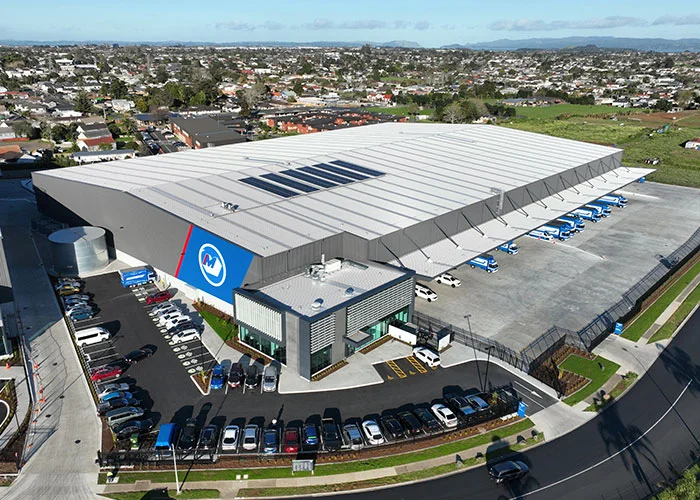Profits soften as Mainfreight absorbs U.S. freight turbulence
Mainfreight’s latest earnings reflect weaker performance in the United States as freight volumes soften and cost pressures persist, marking a shift from the exceptional profit conditions seen during the pandemic-era logistics boom.

Mainfreight, New Zealand’s most globally recognised logistics company, has reported lower profit as its U.S. operations face weakening freight demand. The result marks the end of a rare profitability cycle where pandemic-era supply chain disruption temporarily generated record pricing power for logistics firms worldwide.
During COVID-19, logistics companies benefited from elevated freight rates, customer desperation, and a willingness to pay premiums to guarantee space on ships and trucks. Those artificial conditions have now evaporated. Consumers have reduced spending, retailers have cut inventory, and the freight market has normalized. The drop in volume has hit Mainfreight’s U.S. division hardest, where the company expanded aggressively over the past few years.
Mainfreight differs from competitors because it owns much of its infrastructure — warehouses, transport assets, fleet capacity. This full-control model is a strength during growth cycles because it improves service reliability. However, when volumes shrink, fixed costs weigh heavily on profitability. Facilities still require staffing, maintenance, and financing, regardless of shipment volume.
The earnings drop does not represent a strategic failure. Instead, it signals a shift into a different market phase: from volume-driven revenue to efficiency-driven execution. Mainfreight has always operated on long-term strategy horizons, often expanding during downturns to win market share when competitors retreat. The company views short-term softness as an opportunity to strengthen its network and relationships rather than an existential threat.
Globally, freight markets have become more fragmented. E-commerce growth continues, but consumers are buying more cautiously as inflation and interest rates remain elevated. U.S. retailers are more conservative with inventory and lead times, reducing Mainfreight’s volume predictability. Meanwhile, the company continues to invest in network density — adding facilities to shorten transit times and improve freight routing.
Mainfreight’s culture is its hidden differentiator. Teams operate under the philosophy of decentralized decision-making — each branch is run like a standalone business, responsible for its performance and customer relationships. This promotes accountability and responsiveness, especially when market conditions deteriorate.
The company has seen cycles like this before. Logistics follows demand, and demand follows economic momentum. As consumer and manufacturing activity rebounds, freight volume demand tends to recover sharply. Mainfreight’s challenge is timing — absorbing fixed costs now to be positioned for growth later.
The U.S. slump marks temporary turbulence rather than a strategic derailment. Mainfreight’s long-term investments, global platform, and operating discipline prepare it for the next upcycle — when efficiency, capacity, and reliability will matter more than volume speed.





